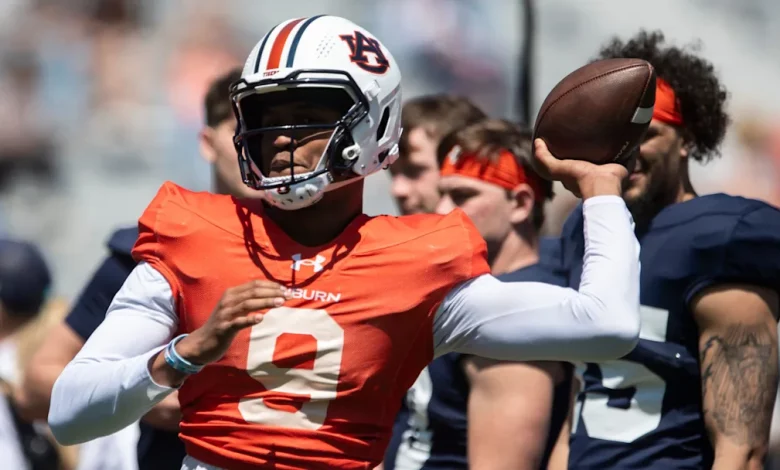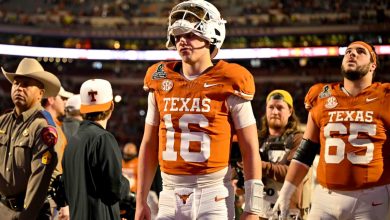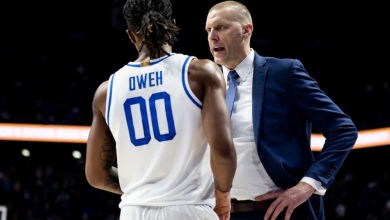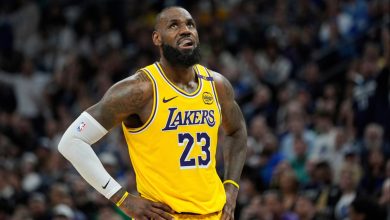ESPN Names Auburn Among Programs To Be Active in 2026 QB Recruiting

ESPN Names Auburn Among Programs To Be Active in 2026 QB Recruiting
As college football continues to evolve with an ever-increasing emphasis on quarterback talent, recruiting remains a pivotal aspect of program success. ESPN’s recent analysis highlights Auburn University as one of the prominent programs expected to be highly active in the 2026 quarterback recruiting cycle, signaling their strategic focus on securing elite signal-callers for the future. This emphasis on quarterback recruitment reflects Auburn’s broader program aspirations, coaching philosophies, and a recognition of the importance of finding a dynamic leader to spearhead their offense in the coming years. This comprehensive discussion explores the reasons behind Auburn’s aggressive approach, the landscape of quarterback recruiting in 2026, potential targets and their profiles, how Auburn’s recruiting strategy aligns with their overall football vision, and the broader implications for the program and college football recruiting at large.
**The Significance of Quarterback Recruiting in College Football**
The quarterback position is arguably the most critical on a football team, often dictating the success or failure of an offense. A talented quarterback can elevate a program, energize recruiting classes, and influence game outcomes with their decision-making, leadership, and athletic ability. Consequently, college programs prioritize recruiting top-tier quarterbacks, especially in the early cycles, to build sustainable success and adapt to evolving offensive trends.
In recent years, the college game has shifted toward more dynamic and versatile quarterbacks capable of extending plays with their legs, making accurate throws under pressure, and executing complex offensive schemes. Programs that identify and develop such players gain a competitive edge. Therefore, Auburn’s focus on the 2026 quarterback recruiting cycle signifies their intent to align with these modern offensive philosophies and secure a long-term solution under center.
**Auburn’s Strategic Approach and Motivation**
Auburn’s interest in being active in the 2026 quarterback recruiting cycle is driven by multiple factors. First, the program’s recent quarterback developments have underscored the need for a consistent pipeline of high-level talent. While Auburn has historically produced notable quarterbacks—such as Cam Newton, Nick Marshall, and Jason Campbell—their recent recruiting efforts have aimed to find a signal-caller who can both lead on the field and fit their offensive system.
Second, the coaching staff recognizes that the quarterback position can be a game-changer for recruiting other prospects. A highly regarded quarterback can attract talented skill players, linemen, and defensive recruits who want to play alongside a proven leader. Auburn’s coaching staff, led by head coach Hugh Freeze, has emphasized building a culture of competitive excellence and innovation, which requires a quarterback who embodies those qualities.
Third, Auburn’s recruiting activity in 2026 reflects their broader ambition to compete at the highest levels of college football, including contending for SEC titles and national championships. Given the conference’s talent-rich landscape and the increasing quality of quarterback prospects nationally, Auburn aims to be proactive rather than reactive in identifying and securing the best available talent early.
**The 2026 Quarterback Recruiting Landscape**
The 2026 quarterback class is shaping up to be highly competitive, with several top-tier talents emerging nationally. While some prospects are still early in their development and evaluations, a few names have already begun to garner attention from college programs, including Auburn. The landscape is characterized by a mix of dual-threat athletes, pocket passers with exceptional arm talent, and versatile quarterbacks capable of adapting to multiple offensive schemes.
Key factors influencing the 2026 quarterback recruiting landscape include:
– **Early Recognition and Development:** Many of the top prospects are already making waves at the youth and high school levels, with some holding multiple scholarship offers.
– **Regional and National Contention:** While certain regions, such as Texas, California, and Florida, continue to produce elite quarterbacks, programs across the country are competing for talent from various parts of the nation.
– **Offensive Scheme Fit:** Prospects are evaluated based on their ability to fit specific offensive philosophies—whether spread, dual-threat, pro-style, or dual-system.
– **Physical and Mental Attributes:** Coaches look for quarterbacks with prototypical size, arm strength, accuracy, football IQ, leadership qualities, and resilience.
**Potential Targets and Profiles for Auburn**
Although recruiting rankings and evaluations are still in their early stages, several players are emerging as potential targets for Auburn’s 2026 quarterback class. Based on early data, film analysis, and recruiting conversations, some prospects include:
– **Elite Dual-Threat Athletes:** These quarterbacks possess exceptional mobility, arm strength, and improvisational skills. They thrive in offenses that emphasize RPOs and designed quarterback runs. Auburn would prioritize such players to fit Hugh Freeze’s offensive scheme, which favors tempo and versatility.
– **Pocket Passers with High Ceiling:** These prospects have prototypical size (6’3” to 6’5”), strong arms, and pocket presence. They are viewed as developmental projects with high upside, capable of elevating Auburn’s offense through precise passing and leadership.
– **Young Early Bloomers:** Some quarterbacks are already showing promise as freshmen or sophomores, giving Auburn an opportunity to build long-term relationships early.
While specific names may not be publicly confirmed yet, some players on recruiting radars include highly regarded prospects from quarterback-rich states like Texas, Florida, Georgia, and California. As the cycle progresses, more names will emerge, and Auburn’s staff will likely prioritize those with both high potential and fit within their offensive philosophy.
**Auburn’s Recruitment Strategy and Timeline**
Auburn’s approach to the 2026 quarter-back cycle will likely involve multiple phases:
– **Early Identification and Relationship Building:** The coaching staff will establish early contact, build relationships with prospects and their families, and evaluate film and workouts.
– **Camp and 7-on-7 Exposure:** Auburn will probably host or attend events where they can evaluate prospects in live settings, assessing athletic ability and football IQ.
– **Official Visits and Campus Engagement:** Once prospects begin to rise in the rankings, Auburn will aim to host them on campus, showcasing facilities, academic support, and their coaching staff’s vision.
– **Evaluation and Commitment:** The staff will monitor performance and development over the next couple of years, with the goal of securing commitments from their top targets possibly by 2025, for signing in December 2025.
Throughout this process, Auburn will leverage their relationships with high school coaches and player development staff, emphasizing their offensive scheme, playing style, and the opportunity to compete early.
**Why Auburn’s Focus on 2026 Quarterbacks Matters**
Auburn’s proactive stance in the 2026 quarterback recruiting cycle reflects several strategic priorities:
– **Building a Long-Term Foundation:** By securing a top quarterback early, Auburn can develop a rapport and mentorship, ensuring the player’s growth aligns with the program’s evolution.
– **Attracting Other Recruits:** A highly ranked quarterback can serve as a recruiting magnet, drawing in talented skill players, linemen, and defenders who want to play alongside a proven leader.
– **Offensive Modernization:** Hugh Freeze’s offensive schemes rely heavily on mobile, intelligent quarterbacks capable of executing RPOs, play-action, and quick decision-making. Securing such a player is critical to executing their vision.
– **Sustainability and Competitiveness:** The college football landscape rewards programs that can consistently identify and develop quarterbacks, providing a competitive edge over rivals.
– **Recruitment Continuity:** The cycle of quarterback recruitment is often cyclical, with programs needing to replenish talent pipelines regularly. Auburn’s active pursuit indicates their intent to stay ahead of the curve.
**Broader Implications for College Football and Recruiting Trends**
Auburn’s emphasis on the 2026 quarterback class exemplifies a broader trend across college football: the prioritization of early, targeted recruiting for key positions, especially quarterback. This approach aligns with the increasing competitiveness of the sport, where recruiting momentum and early commitments can shape the entire class.
Furthermore, the focus on dual-threat and mobile quarterbacks reflects offensive evolutions, with programs recognizing that a versatile quarterback can adapt to multiple offensive styles and defenses. The 2026 cycle will likely see a continued emphasis on athleticism, football IQ, and leadership qualities.
The Auburn case also highlights the importance of recruiting infrastructure, relationships, and evaluation in securing top talent early. Programs investing in analytics, coaching relationships, and comprehensive evaluation are more likely to succeed in landing top-tier prospects.
ESPN’s projection that Auburn will be highly active in the 2026 quarterback recruiting cycle underscores the program’s strategic focus on securing a transformative player at the most critical position on the field. With a combination of modern offensive schemes, a desire to build a sustainable winning culture, and the recognition of quarterback talent as a recruiting cornerstone, Auburn’s pursuit in 2026 is poised to be aggressive and comprehensive. As the cycle unfolds, the Tigers will undoubtedly target a mix of dual-threat and pocket-passers, aiming to identify a player who can lead their offense to new heights. This proactive approach not only signals Auburn’s ambitions but also reflects a broader trend in college football, where early and strategic quarterback recruiting has become essential for sustained success. The 2026 class promises to be a pivotal chapter for Auburn’s future, and their focus on finding the right quarterback could significantly influence their trajectory in the SEC and national landscape for years to come.









